Ha Chiang Port
From 2004 to 2012 petroleum products (diesel and gasoline) where mainly exported through Keawalee terminal to PR China and Myanmar. The petroleum
products where transferred from tank trucks to barges and then transported to PR China and Myanmar. Export increased from just over 4 million liters in 2004
up to almost 17 million liters in 2011. Operations would be phased out at Keawalee terminal in 2012 and transferred to Chiang Sean Commercial Port (CSCP).
However the transfer of operations to CSCP was unable to commence due to the low water level at the port and the navigation (entrance) channel. Beginning 2012,
as intermediate solution, all operations were temporarily transferred to Hachiang Commercial Port (HCCP).
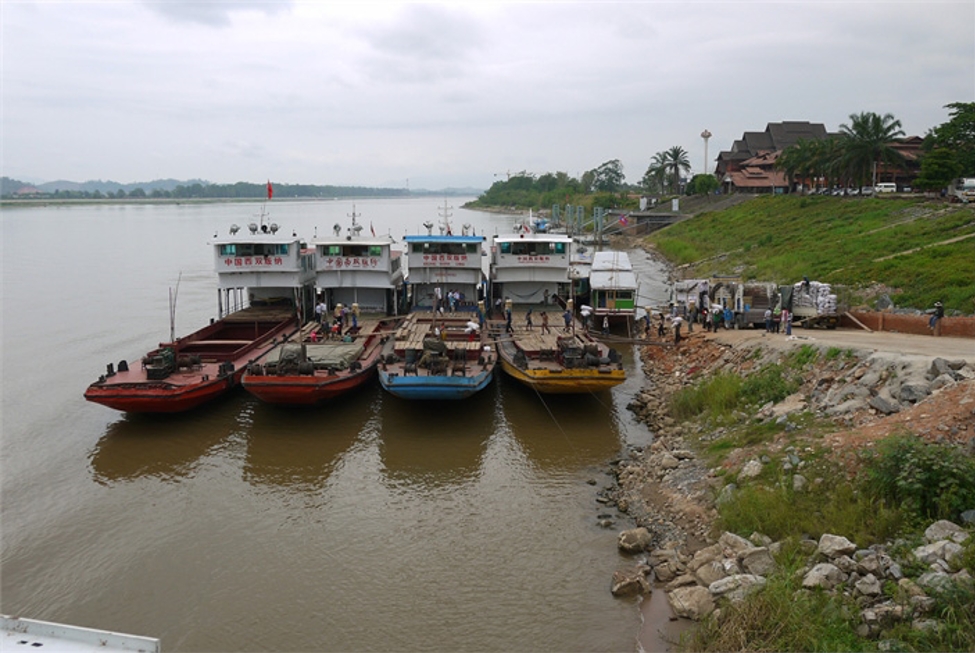
The diesel and gasoline are mainly exported to the mainland of PR China and Myanmar and partly used for bunkering vessels. These bunkering operations by transfer
shipment at Wan Pong anchorage, Myanmar just across the border.
At the 10th Navigation Advisory Board (NAB) Meeting, Thailand requested the Mekong River Commission (MRC) assistance to implement a ‘Pilot Project for Sustainable
Management of Dangerous Goods at Chiang Sean Commercial Port (CSCP)’. The proposal was accepted by the other Member Countries as the training and management
systems developed at CSCP can be applied to other inland ports in the Mekong Basin. In this regard the Navigation Programme travelled to CSCP in February 2012 to meet
with representatives from Thailand Marine Department (TMD) and Port Authority of Thailand (PAT).
During the mission to CSCP the main new insight was that due to the low water levels at CSCP and the navigation channel, vessels are importing and exporting cargo through
Hachiang Commercial Port (HCCP). In the short term diesel and gasoline would be exported through HCCP.
As the owner/operator of HCCP was not fully familiar with the transfer of dangerous goods the owner requested to participate in the pilot project that was set up for CSCP.
Both the Port Authority of Thailand and the Marine department agreed that HCCP could participate in the pilot project.
Thailand Marine Department found it important to play an active role with private ports and terminals along the Mekong River.
The Terminal Audit Checklist (TAC) completed for HCCP was analyzed to determine the existing deficiencies and point for improvement at the port. Later that year the port
workers and management from HCCP were invited to participate in a dangerous goods training course.
After the pilot project and the training of the port workers and management the port decided to do some major investment to increase the safety and security in the port and
also invested in additional firefighting and pollution fighting equipment.
Organizational structure of HCCP
As HCCP is a relative small port, the organizational structure is quite simple, the port has a general manager an administration section and an operations and cargo section.
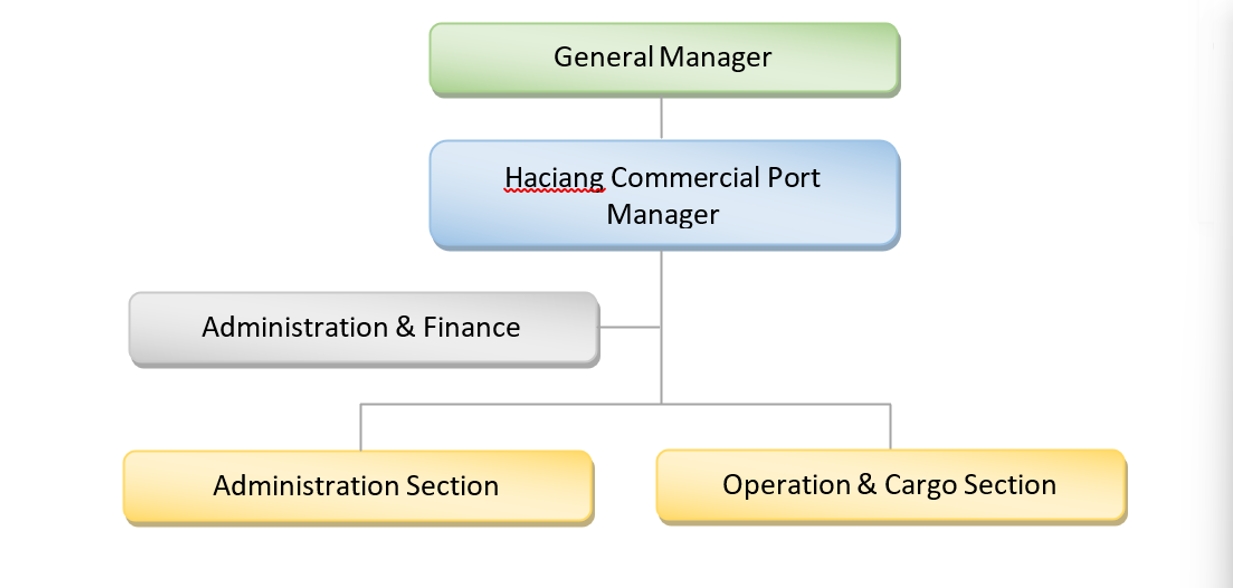
Berth facilities
The port has a sloped berth for trucks to reach the vessels for loading/discharging general cargoes. The berth is about 110 meters in length. Up to 5 Vessels can berth
alongside each other for cargo operations. The port also has one vertical berth where one vessel can berth for loading/discharging heavy loads.

The port also has one dedicated berth for loading/discharging fuel (diesel and gasoline) from truck to vessel.

Port Facilities
Loading and discharging of vessels is mostly done by manual labor. For heavy loads the port has one Tandano crane available at the vertical berth.
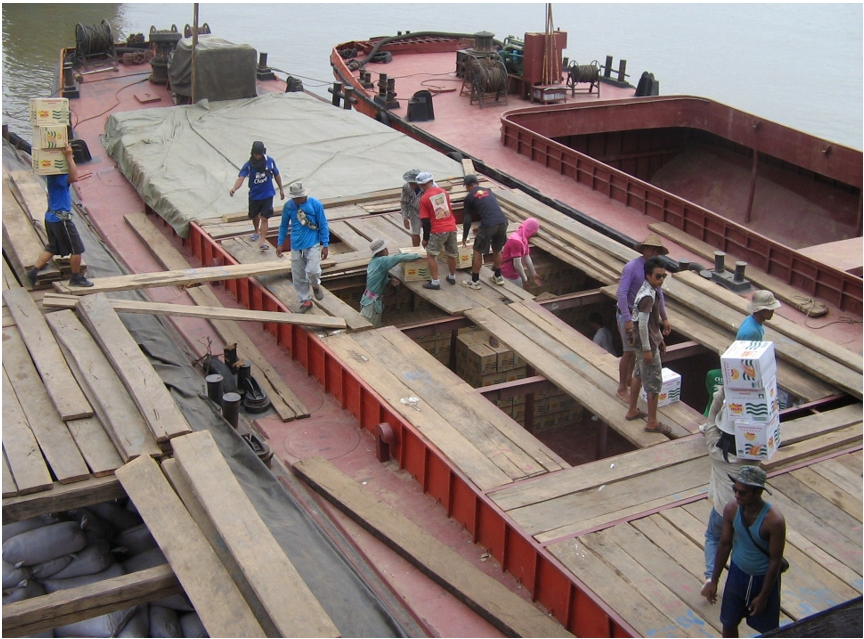
Port services
The port has the can also offer the following facilities to vessels: provisions & stores, fresh water, spare parts, bunkering of fuel, medical facilities, shore based
electricity, small ship repairs. The port also accepts solid and liquid waste from ships.
For fuel transfer operations the port has dedicated firefighting equipment available.
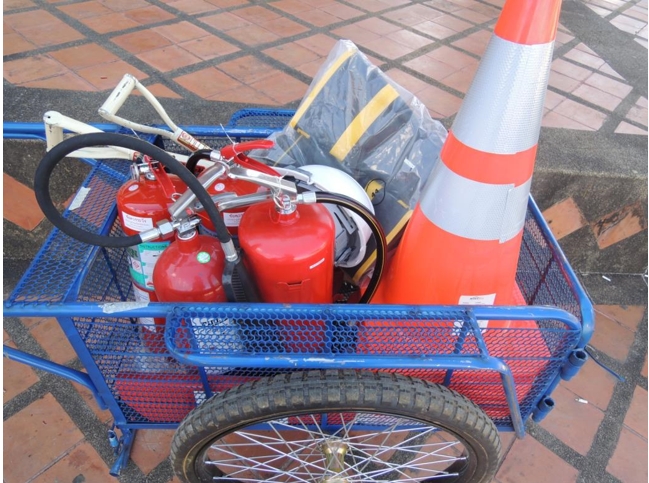
The port has no boom and skimmer available in case of an oil spill.
Traffic information is available on VHF channel 13.
Connection to other transport networks
The inland cargo transport by road is possible through three highways, which are:
- Highway No. 1290 (Mea Sai – Chiang Sean)
- Highway No. 1016 (Mea Chan – Chiang Sean)
- Highway No. 1290 (Chiang Sean – Chiang Khong
Internationally, the ports connect with the East-West Economic Corridor and the North-South Economic Corridor. The two Corridors intersect at Phisanulok Province.
Air-borne transport can be made through Mea Fah Luang-Chiang Rai International Airport. There is also a plan to build a railway track to connect with Chiang Rai.
Security
The port has several security measures in place. The port has a CCTV surveillance system in place, the system is connected to a central observation point in the main building.

The access to the port is controlled (security guard with logbook, registering equipment and handheld VHF) and there are measures in place to avoid unauthorized
access to the port. Drivers entering and leaving the port must first pass a checkpoint where all documents are inspected. The port has a surrounding fence installed.
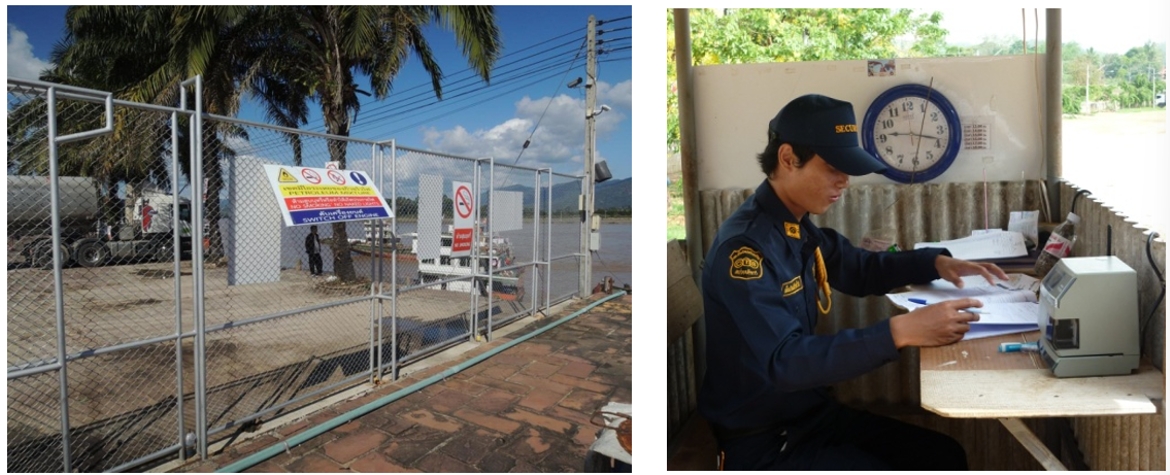
Working hours
Cargo operations only take place during daytime. Normal working hours are from 08.30 in the morning till 16.30 in the afternoon. On request the working hours
can be extended till 18.00.







